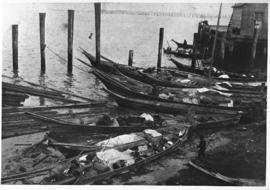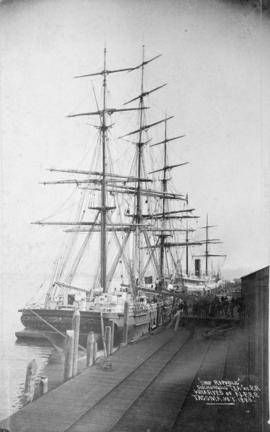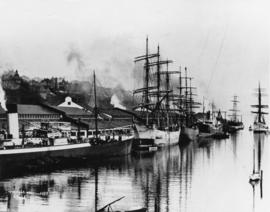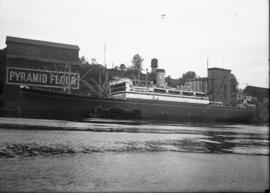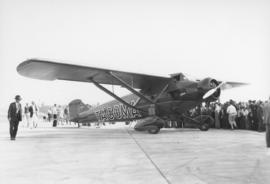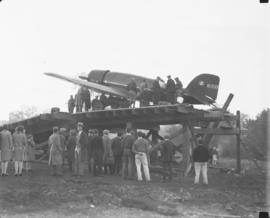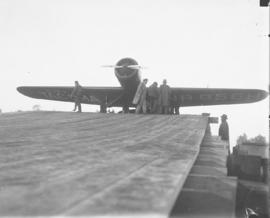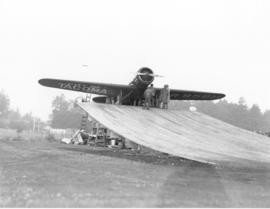- Item
- 1890
Part of Thomas H. Rutter Photographs
ca. 1886. Several long boats (Indian canoes) rest on the beach at about Fifth and Pacific in Tacoma in this photograph from the mid 1880s. Long boats could transport a whole family with supplies for a season of fishing. This group of boats is probably preparing to head upstream on the Puyallup River where members of the Puyallup tribe worked in the hop fields of the Puyallup Valley. The Puyallups are part of the Puget Sound Salish original peoples. They were hunters, gatherers and fishermen, although they inhabited permanent houses along the riverbanks and along the Sound. Salmon was their main food and figured strongly in their culture. Under the Treaty of Medicine Creek, the tribe ceded much of their territories but retained fishing rights. Rutter Collection TPL-564
Longboats--Tacoma--1890-1900; Indians of North America--Tacoma--1890-1900;
